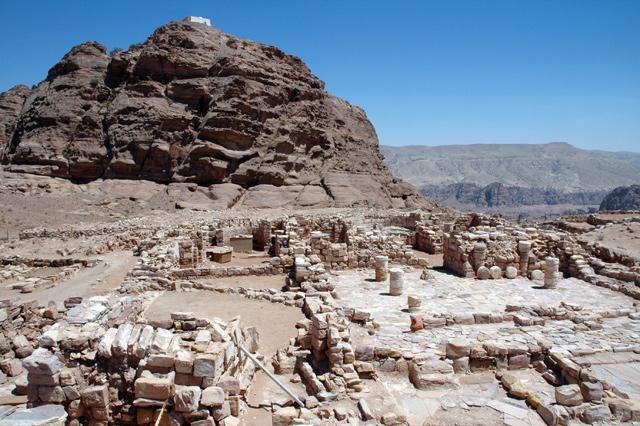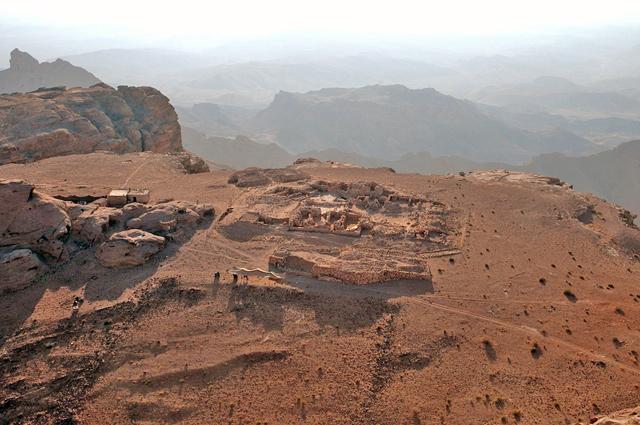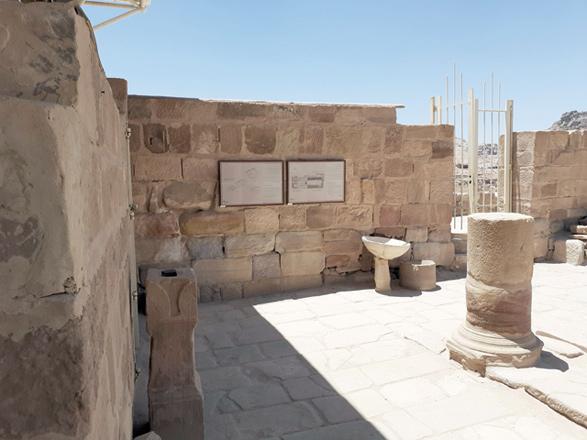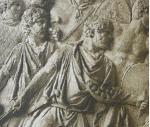You are here
Petra Papyri brought back to full glory after quarter a century
By Saeb Rawashdeh - Oct 17,2018 - Last updated at Oct 17,2018
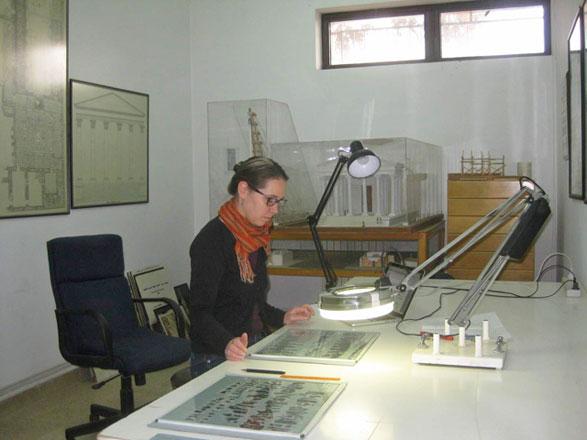
Marja Vierros, a papyrologist from the University of Helsinki, analyses the papyri for information about daily affairs in Byzantine Petra (Photo by Barbara Porter)
In February 1994 a Finnish scholar came to Jordan to see the carbonised Papyri of Petra and was utterly disappointed by “a mess of black charcoal”.
By the time he and his team of experts from the University of Helsinki and University of Michigan were finished, 25 years later, all five volumes of that mess of black charcoal were restored to their former glory for all to see.
Barbara Porter, director of the American Centre of Oriental Research (ACOR), noted that “the Petra Papyri project represents a major scholarly achievement for the culture of Jordan”. However, it was not easy as “in most cases, the outer windings of the rolls were destroyed,” said Professor Jaakko Frösén, from the University of Helsinki, at the lecture titled “The Petra Papyri V” held on Tuesday at ACOR.
“The papyri were clearly legal and economic documents and were part of an archive or dossier, probably a family archive, from the sixth century AD,” Frösén continued, noting that the personal names were mostly Greek but among them there were also Nabataean names written in Greek letters.
In 1993, American excavations in the metropolitan church of Petra unearthed the documents, which cover a period from 530 to 590 AD, noted Docent of Classical Philology at the University of Helsinki Antti Arjava.
Arjava also stated: “There is information on agriculture, housing, taxation, registration of property and settlement of quarrels in Palestine.” He highlighted that toponyms appearing in the papyri are an important source of information on pre-Islamic Arabic language.
The introductory chapters in the scrolls also discuss the Greek language, notarial formulas, legal terminology, calendars and administration in Petra.
“The route between the Red Sea, the northern part of the Syria-Palestine area and the Black Sea was an important military and trade route known as the ‘Via Nova Traiana’. It also served as a pilgrims’ route to the south to the holy places of Palestine and the Sinai,” Frösén stressed, adding that together with Christianisation, the Nabataeans accepted the Greek language as their primary official language.
“That’s why our documents were written in Greek. A smaller sensation was that many of the toponyms [names of the villages] around the city were in fact Arabic names [written in Greek letters]”, the expert highlighted.
“It means, that the Arabic-speaking tribes were in that area already in the pre-Islamic period, at latest in the beginning of the 6th century — more than 100 years before Prophet Mohammad,” Frösén said, adding that the scrolls mention several churches and other public buildings, among them “the House of our Lord the Saint High-Priest Aaron” outside of the city of Petra.
“Around ninety documents were managed to be edited in these five volumes, some of them very poorly preserved”, Arjava stated while also, noting another discovery that “the overwhelming majority of the texts pertain to the archdeacon of the metropolitan church, Theodoros, son of Obodianos, or his family members”.
“It is thus a reasonable hypothesis that all these papyri once belonged to Theodoros, who kept rolls relating to both his personal and clerical life,” Arjava elaborated, adding that the Petra Papyri “present us with more than two dozen men linked with the church”. This is a relatively high proportion of males appearing in the texts and certainly reflects the circles in which Theodoros moved, the scholar speculated.
In order to clarify some hypotheses, the Finish Jabal Harun Project was launched in 1997 and eight full excavation seasons at the site were conducted.
“During the first full season in 1998, a small chapel was excavated and cleared. In front of the altar, a small marble fragment was found with only four letters alpha, rho, omega and nu, at the end of one line. That was enough to tell us that we were working on the right place,” Frösén noted.
“But, a church is not a ‘House’. That’s why we continued with rooms of a small monastery which is not a ‘House’, either — and finally with rooms of a hostel, ca. 20sqm each. In fact, the whole building complex is a pilgrimage centre with a hostel for VIPs, used also as a hospital during the pandemic diseases, like the bubonic plague at the time of Justinian,” the scholar explained.
It really is just “the House of the Saint High Priest Aaron”, Frösén said.
According to the Finnish expert, the pilgrimage centre of Jabal Haroun belongs to a series of similar building complexes in Transjordan starting with the Monastery of Moses on Mount Nebo and continuing to the south with the Monastery of Lot on the eastern shore of the Dead Sea.
“Many of our team spent the better part of their academic career with these unattractive bits of coal — some of us even half of our lifetime. Soon, this Finnish project will at last be finished,” Arjava concluded.
Related Articles
AMMAN — Scholarly interest in post-Nabataean Petra has increased during the last decades, said a Finnish archaeologist in a recent interview
AMMAN — Between 1997 and 2013, the Finnish Jabal Haroun Project (FJHP) has carried out archaeological excavations at a Byzantine monastery l
AMMAN — The role of American Centre of Research (ACOR) in Amman in “salvaging the Jordanian cultural heritage” took centre stage during a re


